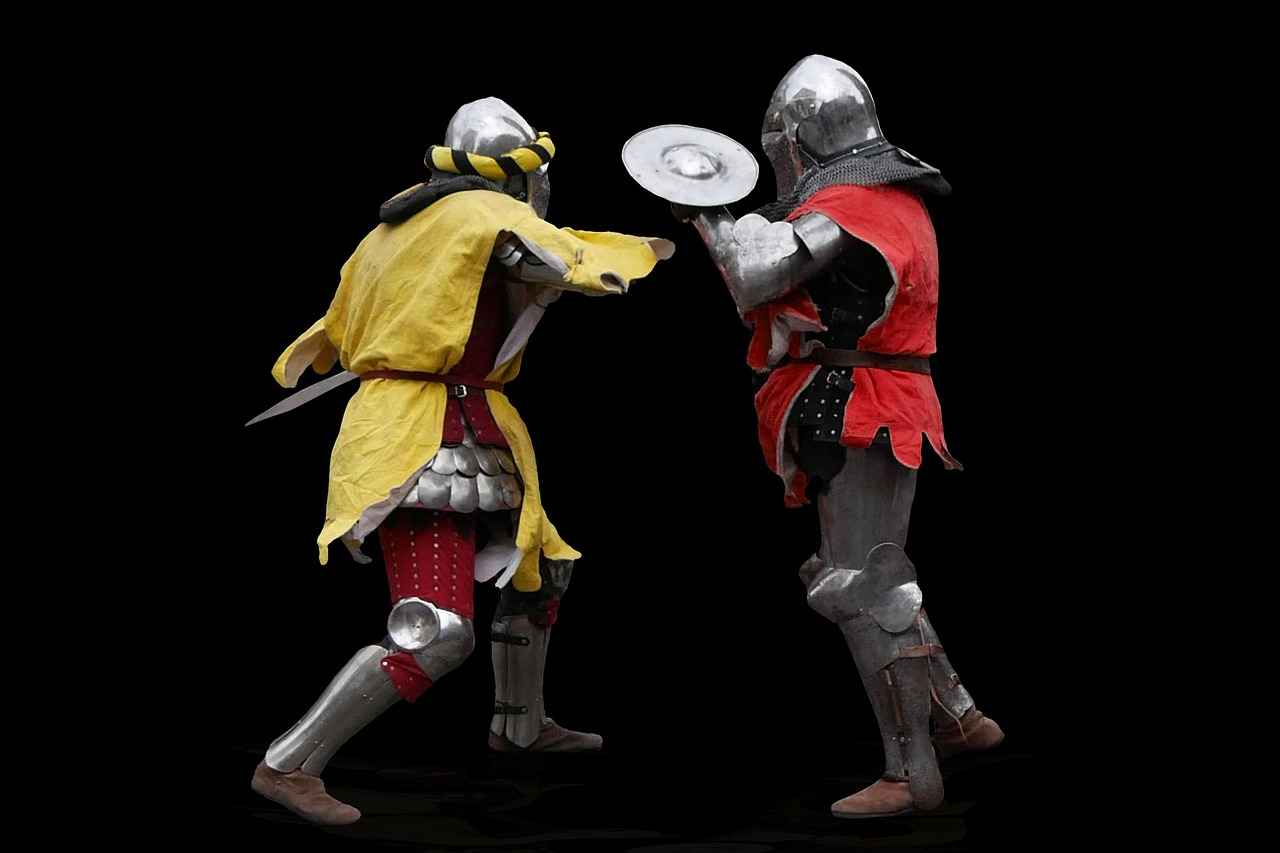This article delves into the complexities of Saber’s identity as Arthur Pendragon, exploring the character’s origins, motivations, and significance within the Fate series and the broader Arthurian legend.
Understanding Saber’s Character
Saber, also known as Artoria Pendragon, embodies the ideals of chivalry and heroism. Her character traits, such as bravery, loyalty, and a strong sense of justice, reflect the values of a true king. Throughout her journey, she faces moral dilemmas that challenge her beliefs and redefine her understanding of what it means to be a hero.
The Origins of Arthur Pendragon
The historical and mythical origins of Arthur Pendragon are rich and varied. The legendary roots of King Arthur are steeped in folklore, with tales of his rise to power and the establishment of the Knights of the Round Table. These stories significantly influence Saber’s portrayal in modern adaptations, highlighting her struggles and triumphs as a ruler.
The Historical King Arthur
Scholars debate the historical existence of King Arthur, with various theories and evidence surrounding his identity. This discussion provides insight into Saber’s character, as she embodies the ideals and challenges faced by the legendary king.
Myth vs. Reality
The line between myth and reality blurs in the tales of Arthur. Legends have shaped the perception of Saber, influencing her heroic identity and the expectations placed upon her as a leader.
Influence of Celtic Legends
Celtic mythology plays a crucial role in Arthurian tales. The connection between these legends and Saber’s identity as a knight and ruler enriches her character, adding layers of depth to her story.
Modern Interpretations of Arthur Pendragon
Saber’s character has been reimagined in various media, from literature to video games. Different adaptations portray her heroism and challenges, reflecting contemporary values and the evolving understanding of what it means to be a hero.
Saber’s Role in the Fate Series
In the Fate series, Saber’s identity is central to the narrative. Her participation in the Holy Grail War shapes her character development and relationships with other heroes, revealing the complexities of her identity.
The Significance of the Holy Grail War
The Holy Grail War is a pivotal event in the Fate series. Saber’s involvement not only tests her abilities but also influences her relationships with other Servants, ultimately impacting her journey.
Interactions with Other Servants
Saber’s interactions with other Servants reveal her complexities. Key relationships, such as those with Shirou Emiya and Gilgamesh, highlight her growth and the challenges she faces throughout the series.
Thematic Elements of Heroism
Saber embodies various themes of heroism, including sacrifice and duty. These themes resonate with audiences, contributing to her lasting appeal and the admiration she garners as a character.
Chivalry and Honor
Chivalry is a core component of Saber’s identity. Her adherence to these principles defines her actions and decisions, showcasing her commitment to her ideals.
Conflict and Resolution
Saber faces numerous conflicts that test her values. These challenges shape her character arc, leading to significant growth and a deeper understanding of her role as a hero.
Conclusion: The Legacy of Arthur Pendragon
Saber’s identity as Arthur Pendragon leaves a lasting legacy in both literature and gaming. Her impact is profound, and the enduring fascination with her character continues to inspire new generations of fans.

Understanding Saber’s Character
Saber, known as Artoria Pendragon, is not merely a character in the Fate series; she is a representation of the highest ideals of chivalry and heroism. Her journey is one that embodies the essence of a true king, showcasing virtues that resonate deeply with audiences. This section will delve into her character traits, illustrating how they reflect the values of a noble leader.
One of Saber’s most prominent traits is her unwavering sense of honor. Throughout her narrative, she consistently prioritizes her duties over personal desires, demonstrating a commitment to her role as a protector. This dedication is evident in her interactions with other characters, where she often places their well-being above her own. Such selflessness is a hallmark of a true hero, reinforcing the idea that leadership is about serving others.
Additionally, Saber embodies the principle of courage. Despite facing formidable foes and insurmountable challenges, she remains steadfast and resolute. Her bravery is not just in battle; it also manifests in her willingness to confront her own doubts and fears. This internal struggle adds depth to her character, making her relatable to those who also grapple with their own insecurities.
Compassion is another key aspect of Saber’s character. She understands the weight of her responsibilities and the impact her decisions have on those around her. This empathy allows her to connect with allies and adversaries alike, showcasing her ability to see beyond mere conflict. It is this compassion that often leads her to seek peaceful resolutions, reflecting the ideals of a wise ruler.
Moreover, Saber’s journey is marked by a profound sense of purpose. She fights not just for victory but for the ideals she believes in, striving to create a world where justice prevails. This sense of purpose drives her actions and decisions, making her a beacon of hope for those who follow her.
In conclusion, Saber’s character is a rich tapestry woven from the threads of honor, courage, compassion, and purpose. These traits not only define her as a formidable warrior but also as a true king, embodying the values that resonate with the essence of heroism.

The Origins of Arthur Pendragon
The historical and mythical origins of Arthur Pendragon are rich and varied, weaving a tapestry of legends that have fascinated audiences for centuries. As we delve into the legendary roots of Arthur, we uncover how these narratives have shaped the portrayal of Saber, also known as Artoria Pendragon, in modern adaptations.
Arthur Pendragon, often regarded as the epitome of a heroic leader, is shrouded in both history and myth. The tales surrounding him vary significantly, with some suggesting he was a real king who led the Britons against Saxon invaders, while others depict him as a purely mythical figure, a symbol of chivalry and nobility.
Historical accounts of King Arthur are sparse, with most references appearing in medieval literature. Chronicles such as Geoffrey of Monmouth’s “Historia Regum Britanniae” provide a blend of history and folklore, establishing Arthur as a king who wielded the legendary sword Excalibur and led the Knights of the Round Table. This portrayal emphasizes heroism and valor, qualities that resonate deeply in Saber’s character within the Fate series.
The mythical elements of Arthurian legend, such as the quest for the Holy Grail and the enchantments of Merlin, further complicate the historical narrative. These stories not only highlight Arthur’s leadership but also his profound moral dilemmas, which are mirrored in Saber’s own struggles throughout her journey. The duality of Arthur as both a king and a flawed human being enriches Saber’s portrayal, allowing audiences to connect with her on a deeper level.
Moreover, the influence of Celtic legends cannot be overlooked. These tales often feature themes of destiny, magic, and the supernatural, which play a significant role in shaping the character of Saber. As a knight and ruler, Saber embodies the ideals found in these ancient stories, making her a compelling representation of Arthur Pendragon in contemporary media.
In conclusion, the origins of Arthur Pendragon encompass a fascinating blend of history, myth, and cultural significance. These elements not only inform Saber’s character but also enrich the narratives within which she operates, ensuring that the legend of Arthur continues to captivate audiences around the world.
The Historical King Arthur
The existence of King Arthur has long been a subject of debate among scholars, historians, and enthusiasts alike. This enigmatic figure, often depicted as a noble ruler and a paragon of chivalry, is shrouded in a mix of historical evidence and mythological embellishments. The quest for the real Arthur Pendragon reveals a tapestry of stories that intertwine fact and fiction.
Several factors contribute to the ongoing debate regarding Arthur’s historical existence:
- Historical Texts: References to Arthur can be found in early medieval texts such as Historia Brittonum by Nennius and Geoffrey of Monmouth’s Historia Regum Britanniae. These works offer glimpses into a potential historical figure but often blend history with legend.
- Archaeological Evidence: While no definitive archaeological proof of King Arthur has been uncovered, some sites, such as Cadbury Castle, are believed to be linked to Arthurian legends. Excavations have revealed fortifications that could align with the time of Arthur’s supposed reign.
- Cultural Impact: The legends surrounding Arthur have significantly influenced British culture and identity. The tales of the Round Table and the quest for the Holy Grail have become integral to the narrative of what it means to be a hero.
In modern interpretations, Saber, known as Artoria Pendragon in the Fate series, embodies the spirit of this legendary king. Her character reflects the ideals of honor, sacrifice, and leadership that are often associated with Arthur. By examining the historical context and the myths that surround Arthur, we gain deeper insight into Saber’s motivations and her struggle to live up to the legacy of the once and future king.
Ultimately, the debate surrounding King Arthur’s existence invites us to explore not just the historical figure but also the ideals that he represents. As we delve into Saber’s character in the Fate series, we uncover layers of complexity that resonate with audiences, making her a compelling representation of Arthur Pendragon.
Myth vs. Reality
The line between myth and reality blurs in the tales of Arthur Pendragon, particularly in the character of Saber, also known as Artoria Pendragon. This section delves into how the legends surrounding King Arthur have profoundly shaped the perception of Saber and her heroic identity.
Throughout history, the stories of Arthur have been told and retold, often transforming the original narrative into something that reflects the values and ideals of the time. Saber’s portrayal as a noble knight and king is a direct result of these evolving legends. The mythical aspects of Arthurian lore, such as the magical sword Excalibur and the enigmatic figure of Merlin, contribute to the grandeur surrounding Saber’s identity.
In many adaptations, Saber embodies the ideals of chivalry, courage, and sacrifice, which resonate deeply with audiences. However, the reality of her character is often more nuanced. While she is depicted as a heroic figure, her struggles with duty, identity, and personal sacrifice reveal a complex character that goes beyond mere legend.
- Influence of Historical Context: The legends of Arthur have been influenced by various historical contexts, shaping Saber’s character. These influences can be traced back to Celtic mythology and the romanticized ideals of the medieval period.
- Modern Adaptations: Contemporary interpretations of the Arthurian legend often highlight Saber’s internal conflicts, providing a more relatable and humanized version of the once-mythical king.
- Heroic Identity: The duality of Saber as both a legendary hero and a flawed individual showcases the complexities of heroism in literature.
Ultimately, the intersection of myth and reality in Saber’s character serves as a powerful reminder of how legends shape our understanding of heroism. As we continue to explore these narratives, we gain a deeper appreciation for the enduring legacy of Arthur Pendragon and the heroic ideals he represents.
Influence of Celtic Legends
Celtic mythology serves as a profound foundation for many of the Arthurian legends, enriching the narratives with themes of heroism, magic, and the eternal struggle between good and evil. The intertwining of Celtic lore with the tales of King Arthur provides a deeper understanding of Saber’s identity as both a knight and a ruler.
At the heart of these legends is the concept of fate and the idea that every hero is destined for greatness, often accompanied by trials that test their character. In Celtic mythology, heroes frequently embark on quests that not only challenge their physical strength but also their moral compass. This mirrors Saber’s journey throughout the Fate series, where she grapples with her responsibilities as a leader while adhering to the chivalric code.
Moreover, the mythical creatures and magical elements found in Celtic tales, such as the Lady of the Lake, who is often associated with Avalon, play a significant role in shaping Saber’s narrative. These elements symbolize the mystical aspects of her identity, linking her to the legendary figures of the past and emphasizing her connection to the land and its history.
Additionally, the concept of honor is deeply rooted in both Celtic and Arthurian traditions. Saber’s unwavering commitment to her ideals reflects the values of a true Celtic hero, who often prioritizes duty over personal desires. This alignment with Celtic mythology not only enhances her character but also highlights the timeless nature of her struggles and triumphs.
In conclusion, the influence of Celtic legends on Saber’s identity as Arthur Pendragon is profound and multifaceted. By exploring these connections, we gain insight into her motivations and the enduring legacy she represents within both the Fate series and the broader realm of Arthurian lore.
Modern Interpretations of Arthur Pendragon
Saber, also known as Artoria Pendragon, has been reimagined through various media, showcasing her heroism and the challenges she faces. These adaptations not only highlight her noble qualities but also reflect contemporary values that resonate with today’s audiences.
In recent adaptations, Saber is often depicted as a complex character who grapples with her identity and duty. This portrayal emphasizes her internal struggles, making her more relatable to modern viewers. For instance, in the anime and video game series Fate/stay night, Saber is portrayed not merely as a heroic figure but as a woman burdened by the weight of her responsibilities as a king. This nuanced representation challenges traditional gender roles and highlights the importance of empathy and understanding in leadership.
Moreover, contemporary adaptations often explore themes of self-sacrifice and redemption. Saber’s journey is marked by her willingness to put others before herself, a trait that resonates deeply in today’s society where altruism is highly valued. Her struggles with her past decisions and the consequences of her actions offer a profound commentary on the nature of heroism and the sacrifices that come with it.
Additionally, the portrayal of Saber in various media reflects a shift towards inclusivity and diversity. Adaptations like Fate/Grand Order and the mobile game Fate/Extra reimagine her character in different contexts, allowing for a broader interpretation of what it means to be a hero. This flexibility invites audiences from various backgrounds to connect with her story, enhancing her relevance in a modern setting.
In conclusion, the modern interpretations of Saber as Arthur Pendragon reveal a multifaceted character who embodies the ideals of heroism while navigating the complexities of her identity. These adaptations not only honor the traditional legend but also breathe new life into her story, making it resonate with contemporary values and challenges.

Saber’s Role in the Fate Series
In the Fate series, Saber, also known as Artoria Pendragon, plays a pivotal role that significantly impacts the narrative and the lives of other characters. Her identity as a legendary hero intertwines with the overarching themes of honor, sacrifice, and chivalry.
The Significance of the Holy Grail War
The Holy Grail War serves as a crucial backdrop for Saber’s character development. As one of the main Servants summoned to compete for the Holy Grail, she embodies the ideals of a true king, striving to protect her allies while battling formidable foes. Saber’s commitment to her ideals is tested as she navigates the complexities of the war, forming alliances and facing betrayals. Her journey reflects the struggle between her noble intentions and the harsh realities of the conflict.
Interactions with Other Servants
Saber’s interactions with other Servants are vital to her character arc. Each encounter reveals different facets of her personality and motivations. For instance, her relationship with Shirou Emiya showcases her capacity for empathy and growth, while her rivalry with other Servants, like Gilgamesh, highlights her unwavering resolve. These dynamics not only enrich her character but also drive the plot forward, making her a central figure in the unfolding drama.
Thematic Elements of Heroism
- Chivalry and Honor: Saber’s adherence to the knightly code defines her actions and decisions, making her a symbol of true heroism.
- Conflict and Resolution: Throughout the series, Saber faces numerous challenges that test her values, ultimately leading to her growth and understanding of what it means to be a hero.
In conclusion, Saber’s role in the Fate series is not just that of a warrior; she embodies the essence of heroism itself. Her journey through the Holy Grail War serves as a powerful narrative that resonates with themes of duty, honor, and the complexities of leadership. As audiences continue to engage with her story, Saber remains an enduring figure in both literature and gaming.
The Significance of the Holy Grail War
The Holy Grail War serves as a crucial turning point in the Fate series, shaping the destinies of its characters and the narrative itself. Within this tumultuous event, Saber, also known as Artoria Pendragon, emerges as a central figure whose journey deeply influences her character development and relationships with other heroes.
Saber’s participation in the Holy Grail War is not merely about combat; it is a profound exploration of her identity and values. As a heroic spirit, she is driven by a strong sense of duty and honor, embodying the ideals of a true king. This struggle for the Holy Grail forces her to confront her past, her motivations, and the very essence of what it means to be a hero.
Throughout the series, Saber interacts with various Servants, each bringing their own perspectives and challenges. These interactions are pivotal in shaping her character arc. For instance, her relationship with Shirou Emiya highlights her internal conflicts and desires, revealing her vulnerability beneath the stoic exterior. The bond they share not only influences her decisions but also serves as a catalyst for her growth.
Moreover, the Holy Grail War presents moral dilemmas that test Saber’s principles. As she faces formidable adversaries, she must navigate the complexities of loyalty and betrayal. These experiences force her to reevaluate her beliefs and ultimately lead to a deeper understanding of what it means to be a leader.
In conclusion, the Holy Grail War is not just a backdrop for action but a transformative journey for Saber. Her experiences during this conflict shape her relationships and redefine her heroic identity, leaving a lasting impact on the Fate series and its audience.
Interactions with Other Servants
Saber’s interactions with other Servants serve as a crucial lens through which we can understand her character’s complexities. These relationships are not merely peripheral; they significantly shape her journey and development throughout the Fate series.
- Rider (Medusa) – Saber’s relationship with Rider is marked by mutual respect and understanding. Despite their opposing goals in the Holy Grail War, they share a bond over the ideals of honor and sacrifice. This connection highlights Saber’s empathy and her ability to see beyond the immediate conflict.
- Archer (EMIYA) – The dynamic between Saber and Archer is particularly compelling. Archer represents a darker reflection of Saber’s ideals, showcasing what her life could have become had she made different choices. Their interactions force Saber to confront her own values and the consequences of her past decisions.
- Lancer (Diarmuid) – Saber’s relationship with Lancer is steeped in tragedy and unfulfilled potential. Lancer’s admiration for Saber emphasizes her noble qualities, yet it also brings to light her struggles with her own identity and the burdens of leadership.
- Assassin (Hassan of the Cursed Arm) – Interactions with Assassin present a more sinister aspect of the conflict. Saber’s encounters with Assassin challenge her notions of heroism and morality, revealing the darker sides of the war and the sacrifices made by all Servants.
These key relationships not only enrich Saber’s character but also enhance the overall narrative of the Fate series. Each interaction serves to challenge her beliefs and ultimately contributes to her evolution as a hero. Through these complex dynamics, we see a multifaceted portrayal of Saber, one that resonates deeply with themes of heroism, sacrifice, and the quest for identity.

Thematic Elements of Heroism
Saber, also known as Artoria Pendragon, stands as a paragon of heroism within the Fate series, embodying themes that resonate deeply with audiences. This section delves into the thematic elements of heroism that define her character, particularly focusing on sacrifice and duty.
At the heart of Saber’s identity is her unwavering sense of duty. As a ruler, she is bound by her responsibilities to her people, often placing their needs above her own. This selflessness is a defining trait of her character, illustrating the noble sacrifice that comes with leadership. The audience witnesses her struggle as she grapples with the weight of her decisions, which often leads to personal loss. This theme of sacrifice is not merely a plot device; it is a profound reflection of the burdens that come with power.
Moreover, Saber’s commitment to chivalric ideals enhances her appeal. Her adherence to principles such as honor and loyalty resonates with those who value integrity. In a world filled with conflict and moral ambiguity, Saber’s steadfastness serves as a beacon of hope, inspiring both her allies and the audience. Her journey is fraught with challenges that test her resolve, yet it is her ability to rise above these trials that cements her status as a true hero.
Additionally, the theme of conflict and resolution plays a pivotal role in shaping Saber’s character. Each battle she faces is not just a physical struggle but also a moral one, forcing her to confront her ideals and the consequences of her actions. This internal conflict enriches her narrative, providing depth to her character and allowing the audience to connect with her on a personal level.
In conclusion, Saber’s embodiment of sacrifice and duty, coupled with her chivalric values and the conflicts she navigates, creates a multifaceted hero that resonates with audiences. Her journey is a testament to the complexities of heroism, making her a lasting figure in both literature and gaming.
Chivalry and Honor
are fundamental aspects of Saber’s character, deeply intertwined with her identity as Arthur Pendragon. As a representation of the noble ideals of knighthood, Saber embodies the principles that define a true hero. This section explores how her unwavering commitment to these values influences her actions and decisions throughout the narrative.
Saber’s adherence to chivalric codes serves as a guiding force, shaping her interactions and relationships with other characters. She consistently prioritizes honor, integrity, and selflessness, reflecting the traditional values expected of a king. Her sense of duty often leads her to make difficult choices, sacrificing her own desires for the greater good. This selflessness is particularly evident in her interactions with her allies and opponents alike, where she demonstrates respect and fairness, even in the heat of battle.
Moreover, Saber’s commitment to chivalry is not merely a personal choice; it is also a reflection of her role as a leader. As a ruler, she understands that her actions set a precedent for those who follow her. This understanding drives her to uphold the principles of justice and honor, even when faced with challenging circumstances. Her internal conflicts often arise from the tension between her personal beliefs and the harsh realities of the world around her.
Through her journey, Saber encounters numerous situations that test her adherence to these chivalric ideals. Each challenge serves as an opportunity for growth, allowing her to refine her understanding of what it means to be a hero. The struggles she faces not only highlight her resilience but also emphasize the importance of maintaining one’s principles in the face of adversity.
Ultimately, Saber’s embodiment of chivalry and honor resonates with audiences, making her a compelling character in the Fate series. Her legacy as Arthur Pendragon is defined not just by her achievements but by her unwavering commitment to the ideals that shape her identity as a true knight.
Conflict and Resolution
Saber, also known as Artoria Pendragon, is a character who constantly grapples with her ideals and the harsh realities of her circumstances. Throughout the narrative, she encounters numerous conflicts that challenge her principles, forcing her to confront the essence of her heroism. This section delves into how these challenges not only test her values but also catalyze her growth as a hero.
Initially, Saber is portrayed as a symbol of chivalry and honor, embodying the virtues expected of a king. However, as she faces formidable adversaries and complex moral dilemmas, her unwavering commitment to these ideals is put to the test. The Holy Grail War, in which she participates, serves as a backdrop for these conflicts, highlighting the stark contrast between her noble intentions and the often ruthless nature of the competition.
Throughout the series, Saber encounters various Servants with differing motivations and ethical frameworks. These interactions compel her to reevaluate her understanding of what it means to be a hero. For instance, her relationship with Rider showcases the tension between personal desires and the greater good, prompting Saber to question her own sacrifices and the impact of her choices on those around her.
Moreover, Saber’s internal struggles are not solely external; she grapples with her own identity as Arthur Pendragon. The weight of her legacy and the expectations placed upon her add another layer of complexity to her character arc. As she navigates through betrayal, loss, and the burden of leadership, Saber emerges with a deeper understanding of her role as a hero.
Ultimately, these conflicts lead to significant character development. Saber learns that true heroism is not just about adhering to a strict code of conduct, but also about embracing vulnerability and making difficult choices for the sake of others. This evolution enriches her character and solidifies her status as a compelling and relatable hero within the Fate series.

Conclusion: The Legacy of Arthur Pendragon
Saber’s identity as Arthur Pendragon is not merely a character trait but a profound legacy that resonates deeply within both literature and the gaming world. Her portrayal as a noble king, despite being a female character, challenges traditional gender roles and invites discussions about identity, heroism, and leadership. This conclusion reflects on her lasting impact and the enduring fascination with her character, which has captivated audiences across various mediums.
Throughout the Fate series, Saber’s character embodies the quintessence of chivalry, valor, and sacrifice. Her journey as a knight and ruler is marked by her unwavering commitment to her ideals, which often puts her at odds with her own desires. This internal conflict not only adds depth to her character but also mirrors the struggles faced by many in leadership roles today.
The Arthurian legend serves as a rich backdrop for Saber’s narrative, offering a tapestry of myth and history that enhances her story. As a reimagining of the legendary King Arthur, Saber brings a fresh perspective to the tales of old, inviting new generations to explore the themes of honor, duty, and the complexities of heroism.
Moreover, Saber’s interactions with other characters in the Fate series highlight her multifaceted personality. These relationships not only shape her journey but also resonate with audiences, making her a relatable and inspiring figure. The Holy Grail War, as a pivotal event, further emphasizes her struggles and triumphs, solidifying her status as a beloved character in modern storytelling.
In conclusion, Saber’s legacy as Arthur Pendragon transcends the boundaries of her fictional world, leaving an indelible mark on literature and gaming. Her story continues to inspire discussions about what it means to be a hero, making her an enduring symbol of courage and resilience.
